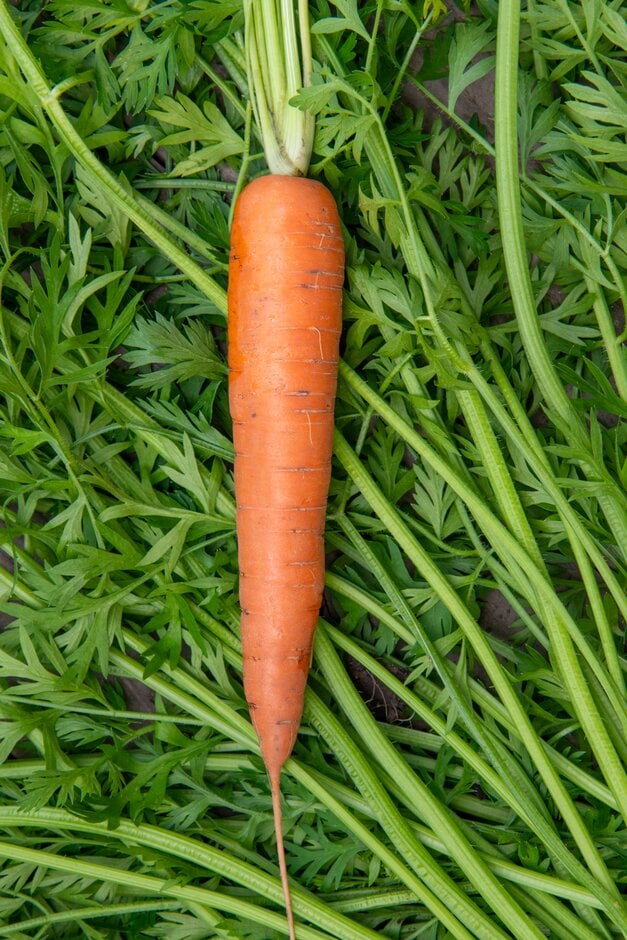Daucus carota 'Sweet Candle'

carrot 'Sweet Candle'
An annual, deciduous vegetable, and a popular, high-yielding variety with smooth orange skin, which is almost coreless The carrots are deliciously sweet flavoured with uniformly cylindrical shaped roots and rounded tips, making this popular with gardeners and exhibitors. Sow from March to July to harvest from July to October/November

Buy this plant
Size
Ultimate height
0.1–0.5 metresTime to ultimate height
1 yearUltimate spread
0.1–0.5 metresGrowing conditions
Moisture
Moist but well–drained, Well–drainedpH
Acid, Alkaline, NeutralColour & scent
| Stem | Flower | Foliage | Fruit | |
| Spring | Green | |||
|---|---|---|---|---|
| Summer | Green | |||
| Autumn | Green | |||
| Winter |
Position
- Full sun
Aspect
South–facing or West–facing
Exposure
Sheltered Hardiness
H4Botanical details
- Family
- Apiaceae
- Native to GB / Ireland
- No
- Foliage
- Deciduous
- Habit
- Clump forming
- Genus
Daucus are more commonly known as wild carrot, a group of herbaceous, biennial (although not always) plants which can reach a height of between 30 to 60cm. The triangular shaped leaves are tripinnate, divided and lacy and flowers begin in pink buds, opening into small and white clustered together in dense umbels. The fruit is small, hairy and lumpy.
- Name status
Accepted
How to grow
Cultivation
Grow in an open, sunny position with deeply cultivated, well-drained soil; heavy clay or stony soils may cause carrots to fork so it is best to make sure you have removed as many stones as possible and for clay soils add plenty of organic matter, such as well rotted manure. To reduce chances of harvesting forked carrots in clay soil choose a short-rooted cultivar. Keep seeds well-watered until your seedlings have emerged. You can also sow seeds in containers, especially if you select a cultivar with a shorter root. Harvest carrots from July until October / November. See grow your own advice pages on how to grow carrots for further advice
Propagation
Propagate by seed. Seeds can be sown from March until July. To sow directly into the ground, dig over the soil to remove weeds and large stones, firm it and then rake it level. Make drills with a hoe, water the base and sow the seed. It is best to sow sparingly so you don’t have to thin the carrots too much later on as this can attract carrot fly. Cover with soil and water in. See carrots cultivation for further information
Suggested planting locations and garden types
- Patio and container plants
- Cottage and informal garden
- Wildlife gardens
Pruning
No pruning required
Pests
May be susceptible to root damage by carrot fly larvae, wireworm, slugs and rodents; foliage may be susceptible to aphids. A barrier of fine insect mesh at least 60cm high around the beds can help prevent carrot fly laying eggs
Diseases
May be susceptible to carrot leaf blight in wet conditions during the growing season but generally disease-free
Get involved
The Royal Horticultural Society is the UK’s leading gardening charity. We aim to enrich everyone’s life through plants, and make the UK a greener and more beautiful place.